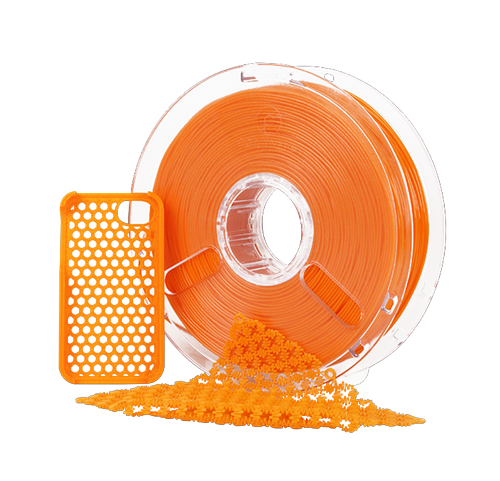
TPU and TPE filaments are cut from the same cloth. In fact, thermoplastic polyurethane (TPU) is a type of thermoplastic elastomer (TPE). These two filaments have been used interchangeably when referring to flexible filaments, which makes the distinction between the two confusing. Despite the similarities, there are differences between the two which affect their applications and the kind of 3D prints that they produce. What are the differences between the two filaments and in what aspects is one better than the other? Read below to find out.
Shore Hardness
Shore hardness is the measurement of the rigidity of 3D printing filaments. TPE is very soft and its shore hardness is usually around A85. This type of softness increases the difficulty for 3D printers, particularly for some extruders. Meanwhile, the shore hardness for TPU is A94 to A95. It is only a slight increase in the rigidity of the prints, but it makes a world of difference while printing.
Winner: TPU filaments
Elasticity
Both are made to be flexible and produce objects that are bendable. Due to its softness, TPE can be stretched for up to double their length and return to their original form, without being disfigured.
Winner: TPE filaments
Ease of Printing
Since TPE is a lot softer, it can be hard to print with, using poorly designed flexible filament extruder. However, you can avoid printing issues by using a stiffer filament. TPU filaments are a lot easier to use when printing due to its slight increase in rigidity.
Winner: TPU filaments by a slim margin, but TPE should be fine to print with as long as you have a particular extruder for flexible filaments.
Print Durability
Both filaments produce durable end-use prints. However, the TPU filaments’ resistance to abrasions, oils, greases, and solvents make their prints well-suited for industrial applications, such as living hinges, grommets, washers, high-impact components and other working parts. This resistance makes them a bit more durable than TPE filaments, relegating them to commercial or hobby uses.
Winner: TPU filaments
Accuracy
Flexible filaments undergo very minimal changes during printing, therefore achieving almost true-to-size measurements after printing. Between the two, TPU has the lowest shrinkage rate at 0.8 to 1.8% while TPE is at 1.2 to 3%
Winner: TPU filaments
H3. Overall Winner: TPU Filaments
While TPU filaments are the sure winner for all these categories, they are still very similar to TPE filaments with regards to layer-to-layer adhesion, printing temperature, and densities. The only difference lies on the type of objects that you want to produce. If you want to create softer prints, choose TPE filaments. Otherwise, go for TPU filaments if you’re creating objects for industrial use. Try both filaments to find out which one works best for you. Stock up on flexible filaments and take advantage of our free shipping for orders beyond $140. If you have any 3D printing-related questions, you can contact us at 08 6380 7488.

